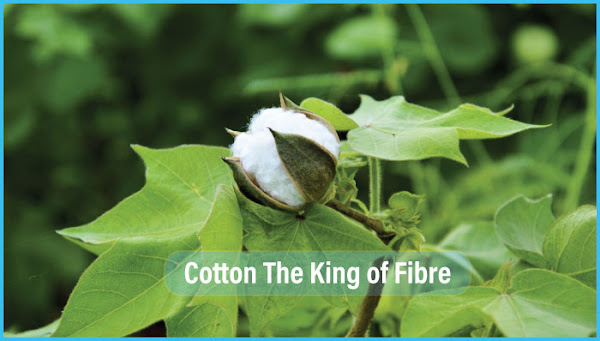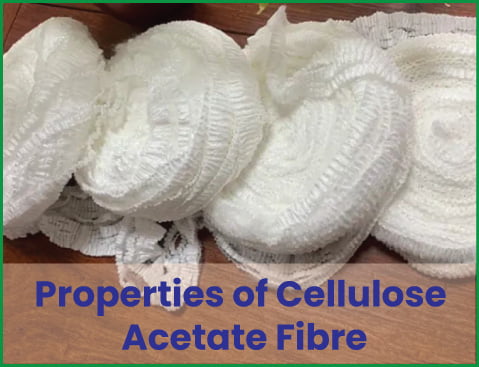Advantages and Limitations of Natural Textile Fibres
Last updated on February 21st, 2024 at 07:12 pm
The properties of a fabric depend primarily on the properties of the fibres from which they are made. Hence familiarity with the characteristic properties of a fibre will aid the consumer in knowing what to expect of different fabrics and what care is required in maintaining them.
Cotton
Advantages
- Cotton can be processed into a wide selection of fabrics. Among the sheer fabrics are cambric, batist chiffon, lawn, organdy and voile. Medium weight cottons include broadcloth, drill, flannel, poplin, terry cloth and long cloth. The heavy weight cottons include brocade, corduroy, denim, pique, and velveteen.
- Cotton can be mercerized to improve luster, absorbency, dye-ability and strength.
- Textured effects are easily achieved either by yarn structure (high twist yarns, nub yarns, boucle yarns, and crimped yarns), fabric construction (crepes, seersuckers) or application of special finishes (embossing, napping).
- Cotton fabrics can be easily dyed or printed with almost all the classes of dyes (except acid and disperse). Pigment printing can be done with the help of a binder. Acid and basic dyes are not used on cotton, since cotton has no affinity for these dyes.
- Cotton is absorbent, does not build up static electricity and is a good conductor of heat and hence is very comfortable to wear.
- The wear-life of cottons is excellent since the fibre is strong.
- Fabrics are easy to launder. They can also be dry-cleaned.
- Various treatments like water repellent finishes, fire retardant and mildew resistant finishes can be given to cottons.
Limitations
- Untreated cotton wrinkles easily.
- Cotton is susceptible to mildew if left damp.
- Cotton is flammable.
- Fabrics take a long time to dry.
Linen
Advantages
- Linen is very durable. It is two to three times stronger than cotton.
- It is comfortable to wear because of its high absorbency, smoothness and good conduction of heat.
- It can be easily laundered since it is stronger when wet and has a good resistance to alkalis and bleaches.
- Linen, like cotton, can be easily dyed or printed.
- Linen withstands high ironing temperatures.
Limitations
- Linen wrinkles easily.
- It lacks flex abrasion and hence shows wear on crease lines and seams.
- Linen has poor press-crease retention.
- It is susceptible to mildew if left damp.
- Fabrics take long time to dry.
- It is flammable.
Jute
Advantages
- Jute is a cheap fibre. It can be blended with other fibres for economic and aesthetic reasons.
- It can be given finishes to improve its durability, its resistance to rot, water, fire and microbes.
- It can be dyed with all the dyes that are applied to cotton. It even has affinity for basic dyes.
- It can be treated with caustic soda to give it a wool-like appearance.
Limitations
- It is a weak fibre.
- It sheds lint.
- It is harsh to the touch.
- It is difficult to bleach.
- It rots and is susceptible to microbial decomposition.
- It is difficult to wash or dry-clean.
Wool
Advantages
- Wool has excellent absorbency which makes it comfortable for the wearer.
- It provides warmth.
- It is cool in lightweight fabrics.
- Fabrics resist wrinkling because the fibre is very resilient and elastic.
- Because of their elasticity, woolen garments, specially knit wear, are comfortable as they yield to the body movements.
- Wool dyes easily specially with acid dyes in a wide range of colors.
- It may be laundered or dry-cleaned.
- Fibres and fabrics are water repellent and fire resistance.
- It can be given ant-shrink and moth resistance finishes.
Limitations
- It is very sensitive to alkaline substances.
- It felts in moist heat and friction.
- Chlorine bleaches affect wool adversely.
- Wool tends to stretch and lose its shape when wet.
- It requires special handling in laundering or dry-cleaning to prevent felting, shrinkage or stretching out of shape.
- Woolen garments tend to stretch during wear.
- Wool is attacked by moths and carpet beetles.
- It tends to build up static electricity.
Silk
Advantages
- Silk fabrics have luster and a soft feel.
- Fibres are stronger than wool, silk is the strongest natural fibre.
- Fabrics are moderately resilient and elastic and therefore resist wrinkles to some extent.
- Silk is absorbent and hence comfortable to wear.
- It is warm and suitable for winter.
- It can be constructed into a variety of fabrics; very sheer drapable fabrics like georgette, chiffon, china silk, crepe de chine or heavy, stiff fabrics like brocade, broadcloth, faille, taffeta, grosgrain, ottoman and velvet.
- It can be easily dyed and printed to give beautiful, brilliant shades.
- It can be laundered or dry cleaned depending on the dye and the finish.
- White silk can be bleached with hydrogen peroxide or sodium perborate.
Limitations
- Sunlight and perspiration weaken the fabric.
- Many dyes used on silk are affected by sunlight and perspiration; some are not fast to washing.
- It is sensitive to alkalis and to some acids.
- It is damaged by chlorine bleaches.
- Some silk fabrics leave water spots.
- Strong alkaline soaps and high temperatures tend to weaken and yellow silk.
- Insects like carpet-beetle and silver-fish attack silk.
- Sunlight affects silk adversely.
- Silk yellows with age.





Just commenting to register my agreement. Your opinion is well written Nice job!